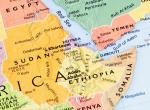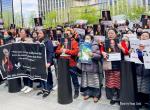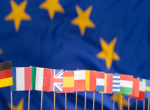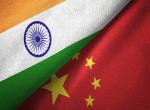India’s Look East Policy (LEP) came of age when New Delhi celebrated two decades of engagement by holding the ASEAN-India Commemorative Summit in November 2012. The first phase of LEP lasted for one decade till 2002 when the then Minister for External Affairs Mr Yashwant Sinha announced the commencement of the second phase. While in the first phase, the emphasis was on political, diplomatic and people to people relationships, improved connectivity and enhanced trade, the second phase revolved around strengthening of economic relations, defence and security cooperation besides strengthening relationships in other areas. During the second phase, though the dominant impulse remained the economic engagement, increasingly the LEP also acquired strategic orientation. The LEP focused not only on the ASEAN members but also expanded to include South Korea, Japan, Australia, New Zealand and other countries in the East. Over the two decades, not only has India progressed from a dialogue partner to the present status of a strategic partner in respect of ASEAN but has also established strategic partnerships on bilateral basis with many ASEAN countries and Japan, Australia and South Korea. It can also be said that after 2012, the Indian government continued to work towards what it called the third phase that was termed as an ‘Enhanced LEP’.
In fact, when Modi government took over the reins of power in May this year, it conscientiously continued with the previous government’s policy and the new Minister for External Affairs, Smt Sushma Swaraj termed the new phase as ‘Act East Policy’ which in a sense meant that more substance was to be imparted through early implementation of many elements of the LEP. While the plan to engage ASEAN has been charted out in the ‘Plan of Action to implement the ASEAN-India Partnership for Peace, Progress and Shared Prosperity (2010-2015)’ announced during the Commemorative Summit of 2012, the Modi administration has been in an overdrive to reach out to all the nations in the wider Pacific region.
Prime Minister Modi’s successful visit to Japan, the India visit of Australian Prime Minister Tony Abbott and the visit of China’s President Xi Jinping are seen as high points in the Modi government’s policy towards the wider East Asian region. Japan is also considering joint projects with India in some of the ASEAN countries besides expressing its interest to invest in India’s North East. The level of defence and security cooperation including joint military exercises and co-production and co-development in defence industry is on the cards. India-Japan civil nuclear agreement could not be concluded because of some apprehensions on part of Japan but that aside, the scope of strategic and economic cooperation is expected to follow an upward trajectory.
During the India visit of Australian Prime Minister Tony Abbott, India and Australia signed the much-awaited India Australia Civilian nuclear cooperation agreement that would enable supply of Uranium to India. The successful conclusion of Abbott’s visit is a watershed event in India-Australia relations. Apart from the civilian nuclear deal, Indian companies are also working towards joint energy ventures in Australia. Earlier this month, Modi attended the ASEAN-India and East Asia Summit in Myanmar where he further outlined his plans to revitalise relationships with ASEAN and East Asian countries in both economic and security fields. From Nay Pyi Taw, Modi travelled to Australia for the G-20 Summit where he held bilateral meetings with Prime Minister Abbot to build on the evolving strategic relationship with Australia. In order to expand India’s footprint in Pacific, he visited Fiji after attending the G 20 meet.
Clearly, within a short period of six months or so, the Narendra Modi government has taken steps to give a boost to the Look East Policy, or what has been termed as the ‘Act East Policy’. In that regard, the statement made by the External Affairs Minister Sushma Swaraj is worth noting. During her visit to Vietnam on 26 August, 2014, she addressed the Indian Heads of Missions and said that India has to not just ‘Look East’ but ‘Act East’. Her visit to Vietnam was the third visit to a Southeast Asian country since she became the Minister for External Affairs in the Modi Cabinet.
President Pranab Mukherjee has also visited Vietnam and signed a number of agreements that include allotment of seven oil blocks for exploration, enhanced defence and security cooperation, increased economic and people to people exchanges besides regional and multilateral cooperation. While Vietnam supported India’s LEP and its increasingly important role in regional and global forums, they also expressed the resolve to ‘foster the implementation of signed agreements’ and observed that cooperation in national defence was an important pillar in their strategic partnership. President Mukherjee also supported the freedom of navigation through high sea, peaceful resolution of disputes based on international law including the 1982 UNCLOS and adherence to the Declaration on the Conduct of Parties in the East Sea towards the adoption of the Code of Conduct of Parties.
It has been stated many times by the Indian strategists that Myanmar is the lynchpin of India’s LEP and is a gateway or a strategic land bridge to the ASEAN. Myanmar is the current Chair of the ASEAN, hosting several meetings of ASEAN during the year. In that regard, Sushma Swaraj was on a four-day visit to Myanmar to participate in the Fourth East Asia Summit (EAS) Foreign Ministers’ meeting, 21st ASEAN Regional Forum (ARF) retreat session and India-ASEAN foreign Ministers Summit. During her visit, she had extensive discussions with Myanmar’s President U Thein Sein, Minister of Foreign Affairs of Myanmar and Pyithu Hluttaw (House of Representatives), Thura U. Shwe on how to further strengthen ties between India and Myanmar.
India has been pushing for greater regional integration of Indian economy with that of the ASEAN by expanding the scope of trade and investment. The main focus of 4th EAS Foreign Ministers’ meeting was on strengthening cooperation in the areas of energy, education, disaster management and enhancing connectivity. Sushma Swaraj reiterated India’s position that India “would soon draft a five-year action plan starting 2016 for enhancing connectivity and cooperation in diverse areas”. The agenda of the 21st Asean Regional Forum retreat session largely revolved around the security issues. Ways of combating terrorism and other non-traditional security threat relating to the South China Sea figured prominently in the meeting.
Regarding the South China Sea dispute, India continued to follow its traditional stance of pushing for a peaceful resolution of the maritime dispute between China and the ASEAN member states and that “no such issue should be resolved through conflict and war” but through peaceful dialogue”. Swaraj remarked, “Recent disputes in the South China Sea underscore the need to resolve sovereignty issues peacefully by the countries concerned in accordance with international law”. Notably, major claimants in the dispute such as Vietnam and the Philippines consider India a benign balancer in the region. Therefore, India is widely envisaged as a key power and one of the major stakeholders in the emerging East Asian security dynamics.
The Modi government has been emphasising on giving urgent attention to the speedy completion of trilateral highway that will connect India-Myanmar-Thailand to facilitate people-to-people contact between India and Myanmar and improve trade and investment opportunities. Prospects for a direct flight from Delhi-Bodhgaya-Yangon are likely to be materialise given the earnestness of Modi administration. Moreover, friendly relations with Myanmar are crucial for peace and development of India’s north-eastern states. Given that it was the first ever visit to Myanmar by any Indian Minister of the new government, Myanmar was given assurance that the new government is willing to strengthen relations with it and thereby, ready to boost trade and investment.
India is aware of the changing dynamics of the East Asian regions. The security architecture of the region is rapidly changing. Rising China and Japan, and the consistently increasing competition between them has taken new dimensions. India has realised the problems as well as the prospects of the changing regional dynamics. In that context, India’s greater role and participation in the security architecture of the region as also the ways and means to enhance India’s presence in the Southeast Asian region are of immense importance, not just to India but to the countries of the East Asian region also. These are important components of the Act East policy as without robust trade, economic investment and physical connectivity, India will not be able to achieve its goals.
Energy security is an important component of the Act East Policy of the Modi government, which has been manifested in the recent MoUs that India has signed with partner countries. New Delhi and Hanoi have moved forward in energy cooperation despite some objections by China. Vietnam has already renewed India’s lease of two oil blocks in the South China Sea for another year. Vietnam is keen to procure the Brahmos missiles, which are jointly produced by India and Russia. Vietnam is also exploring the possibility regarding procurement of naval weaponry. India has agreed to supply four off shore naval patrol vessels to Vietnam and Modi has announced that India will “quickly operationalise the $100 million Line of Credit that will enable Vietnam to acquire new naval vessels from India."
Likewise, India is also working towards greater military cooperation with Japan and Australia. India and Australia will hold their first-ever bilateral military exercise in January 2015.
India-ASEAN FTA in Services
After several rounds of negotiations, India and the 10-member countries of Association of Southeast Asian Nations (ASEAN) signed the Free Trade Agreement (FTA) in services and investments on 8 September, 2014. The final agreement was signed two years after the conclusion of detailed negotiations on the pact. In 2010, India and the 10- ASEAN member countries signed the Free Trade Agreement in goods. However, at that time, the services agreement could not get signed taking into account the sensitivities of a few ASEAN member countries. The realisation of the FTA in services is expected to give the much needed impetus to India’s trade and investment relations with the member countries of ASEAN. In fact, the former Prime Minister Manmohan Singh led United Progressive Alliance government II was criticised for signing an incomplete FTA (FTA in goods only), which was destined to lose out to ASEAN in terms of benefits. As a result, in the past few years, India’s exports remained insignificant, while imports from ASEAN countries increased.
The Indian government as well as the private sector have been ready for the agreement but the ASEAN members couldn’t expedite the pact. Countries such as Indonesia, the Philippines and Thailand took several months to set things right domestically. It is worth noting that the Philippines is yet to ratify the agreement in its parliament. The other nine countries that have ratified the agreement include: Brunei, Cambodia, Indonesia, Laos, the Philippines, Myanmar, Singapore, Thailand and Vietnam. The primary reason for the Filipino apprehension is that it fears that the Indian services sector might sweep the Philippine market and dominate the ASEAN services industry. However, as the FTA in services is implemented, India’s share in total trade would also rise as India is a leader in the services sector, making India-ASEAN FTA a ‘win-win situation’ for all.
It is hoped that with India-ASEAN FTA in services and investments, greater flow of trade and investment and freer movement of professionals will be realised, paving the way for India’s comprehensive regional economic integration with the 10 ASEAN member countries. The good news for India is the inclusion of a brief annexure on movement of natural persons or workforce. The annexure defines business visitors, contractual service suppliers and intra - corporate transferees, issues that are critically important for India. In addition to that, other major issues such as domestic regulations, recognition, market access, national treatment, transparency, participation of developing countries, joint committee on services, review, dispute settlement and denial of benefits etc. are also included in the agreement.
With the completion of India-ASEAN FTA, the road to the Regional Comprehensive Economic Partnership (RCEP) seems clearer. RCEP includes the 10 ASEAN member countries and its six partners including India, China, Japan, South Korea, Australia and New Zealand. ASEAN aims to make RCEP a reality by 2015, which was first mooted during the 2011 ASEAN Summit in Indonesia, and formally launched during the 2012 ASEAN Summit in Cambodia. With the realisation of RCEP, India is likely to gain preferential market access to 15 countries and gain more from price competitiveness.
To benefit most from the India-ASEAN Free Trade Agreement, India needs to keep going on the economic reform path. In that regard, steps to strengthen its medium, small and micro enterprises (MSME) sector are critically important which can help it not only sustain the free flow of trade, but also to become a more competitive player.
Conclusion
The last three years or so have witnessed a growing apprehension about the rising capabilities of an ascendant China and its propensity to assert its claims in South China and East China Sea. The countries in the region are also afflicted with difficult choices to be made between their economic objectives where China is of help and their strategic objectives of safeguarding their national and sovereign interests where some of the nations in the region feel challenged. On the other hand, India is seen as a power which does not threaten or challenge their national interests and can in some away lessen their apprehensions. Against this backdrop, ASEAN states are seeking a moderating role in the region given that New Delhi is seen as a benign power as opposed to China, the US or even Japan. While India may not have the political or the economic clout of ASEAN’s other envisaged partners, it is anticipated that with rising trajectory, India will become a pole of influence in the future. However, China’s influence is considerable and is likely to be so for the coming years. India’s LEP (and now Act East) has been in place now for over two decades and precedes the American pivot to Asia and therefore it stands on its own merit. Modi administration is only building up on what was bequeathed by the previous government but with much more vigour. The strategic dynamics in the region are very complex and still evolving and the LEP is only one element of the vast strategic canvas on which major powers have put forward their own policies like the American rebalance, or Japan’s Security Diamond concept or for that matter China’s New Maritime Silk Route strategy. It is to be hoped that the new policies contribute towards stability and prosperity in the region rather than instability and insecurity.
(Dr. Rahul Mishra, Research Analyst, ICWA)
Published in Vivek: Issues & Options, September - October 2014










Post new comment